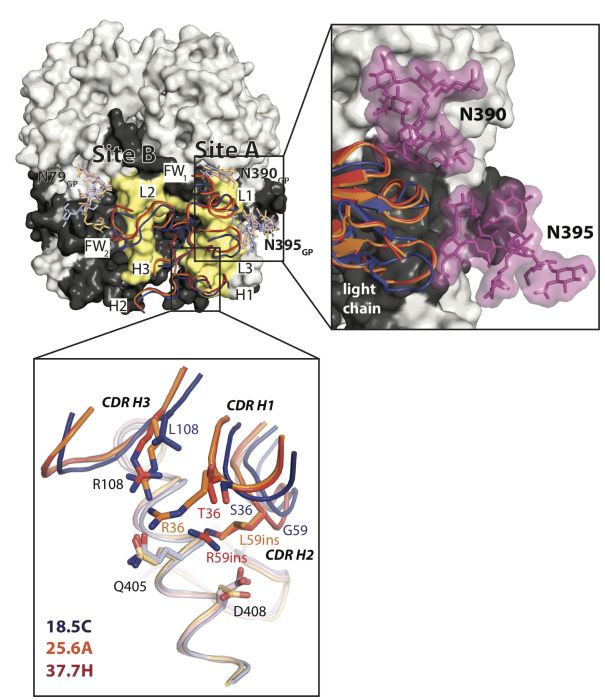Humans are under constant threat from emerging and re-emerging infectious diseases. One such virus is Lassa virus, which causes hemorrhagic fever, deafness and other lifelong health consequences for survivors. Lassa infects hundreds of thousands annually in West Africa with thousands of deaths. Modern case fatality ratios in clinic range from 25-60%, but lethality is 90% in pregnant women. There is not yet any vaccine, and development of an effective vaccine has been hindered by the extreme challenges in eliciting a protective antibody response. Recently, a team led by Kathryn Hastie and Erica Ollmann Saphire of La Jolla Institute for Immunology cracked a series of structures that explained how to achieve that elusive neutralizing antibody response. They began by comparing structures of effective and ineffective antibodies against the virus and discovered that the difference between success and failure was as small as one or two hydrogen bonds to a certain site on the viral surface. They used this information to engineer weak antibodies into strong ones with greater breadth of sequence recognition than before. They next used the information on antibody recognition to engineer the viral surface protein into a form that could be recognized by early "germline" precursors of antibodies that are the starting point for eliciting an immune response after vaccination. These newly crafted forms of the viral surface molecule now provide new routes forward for vaccine development.
 |
Figure: The Lassa virus glycoprotein, GP (in gray) is shown bound to three different neutralizing antibodies with highly quaternary epitopes. Structural comparison of each GP-Fab complex identified key residues in the Fab heavy chain that modulate neutralization potency and breadth (lower inset) and glycosylation sites in the GP that "hug" the light chain of the antibodies (right inset). Genetic removal of these glycans may provide a critical leg up for the immune system and facilitate the maturation of this type of neutralizing antibody. |
Citation: Hastie, KM, Cross, RF, Zandonatti, MA, Koval, AP, Heinrich, ML, Rowland, MM, Robinson, JE, Garry, RF, Geisbert, TW, Branco, LM, Saphire, EO, Convergent structures reveal key residues to enhance potency and breadth for pan-Lassa virus neutralization, Cell 178, 1004-1015(2019). DOI: 10.1016/j.cell.2019.07.020